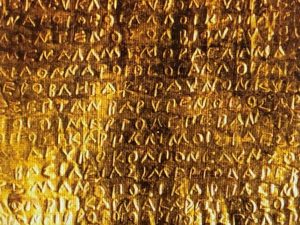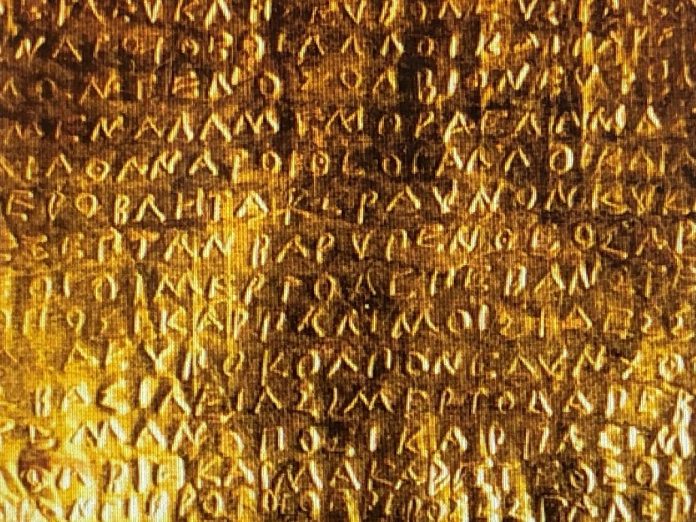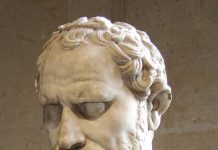“From the vantage point of remembrance, memory is the essential mode for carrying forward the common sense of ordinary people filtered through immemorial tradition.”
Of all the hundreds of thousands of words contained in this 6-volume Cultural History of Memory, I found that single sentence best encapsulates the definition and importance of memory. It comes from the Introduction to Vol. 4, by the editor that volume, Patrick Hutton (Emeritus professor of history, Univ. of Vermont). His book is on the Eighteenth Century; in the interests of full disclosure, I am the editor of a book on that period in another 6-volume set Bloomsbury is publishing, Cultural History of the Universe.
Despite its great strengths, there are notable problems with the Memory set, which are beautifully bound and typeset by Bloomsbury in matching books of about 200 pages each. There are two ways to approach this series. First, a reader may just want to focus on one time period, which is made easy by the fact each of the six volumes is ostensibly dedicated to a certain timeframe: Antiquity, Middle Ages, Early Modern, Eighteenth Century, Nineteenth Century and The Long Twentieth Century (that is, from the late 1800s to the present).
Each book is structured into the same eight chapter headings: Power and Politics; Time and Space; Media and Technology; Knowledge: Science and Education; Ideas: Philosophy, Religion, and History; High Culture and Popular Culture; The Social: Rituals, Faith, Practices, and the Everyday; Remembering and Forgetting. This leads to the second way to read the material: follow a thread from antiquity to the present.
As a scientist, I chose first to follow the Knowledge chapter from beginning to end, as it deals with both science and education. The author of the Knowledge chapter in the Antiquity book, Han Baltussen (professor of classics at the Univ. of Adelaide) set just the right tone on his way of approaching this in the framework of ancient Greece and Rome. “I will use ‘science’ and ‘scientific understanding’ very loosely as the kind of (specialized) knowledge that was pursued by rational means and aimed for rational explanations as opposed to mythological narratives.” Such narratives found their well-spring in the Muses. He explains “That Mnemosyne (memory) was crowned the Mother of the Muses,” which indicated the central importance of memory in Greek culture, one that “provides stability to our identity, and creates a common understanding.” (On the subject of common understanding, I would recommend reading a book that was released this year, and thus too late to be included in the references Balthussen gives: Lyric Poetry and Social Identity in Archaic Greece by Jessica Romney; this book has been reviewed on this website).
Balthussen examines four stages of scientific endeavors that feature the ‘external memory’ known as writing. In the Roman era this becomes a matter of looking at texts that feature “grand-scale data collection,” which became necessary as various scientific areas had over the centuries produced a lot of data that needed to be collected and categorized. But pushing back on a reliance to collect and codify things in writing was none other than Plato, who dismissed this use of extended memory “as a destructive force for our memory.” Balthussen states Plato “was fighting a rear-guard battle” in taking this stance, and paradoxically had to resort to the art of writing to protest its deleterious effects on human, individual memory exemplified by the bardic tradition of Homer. The author concludes with the observation that science writing on a grand scale is artificial or external memory, and certainly beneficial after the passage of 2500 years: “The fact that we can still read much of their work is a remarkable achievement.”
Having read this marvellous chapter, my appetite was whetted for succeeding volumes, but in this I was sorely disappointed. The Knowledge chapter in the Middle Ages book does not even include the word science, except a glancing reference to neuroscience. Rather, it is situated in the schema of St. Augustine, who claimed that “memory was, together with intelligence and will, recognized as one of three components of the soul.” Rather than a look at science, this chapter studies “the variety of reasons for recording personal memories.” More on target is the Knowledge chapter in volume 3, where I found the most important nugget to arise from the pen of Petrus Ramus, who I consider to be the most neglected of all the great philosophers. In the sixteenth century, he conceptualized the book as a “memory machine.” Author William Engel (professor of literature at The University of the South in Tennessee) identifies the fifteenth century philosopher Giovanni Pico della Mirandola as “among the first to recognize and take full advantage of the book as a memory machine. Pico fundamentally remapped the domains of knowledge by giving primacy to the individual and centering on human capacity.” This leads him to a discussion of Leonardo’s Vitruvian Man, and Vitruvian artificial memory schemes that became a backbone of educational instruction for centuries to come.
Sadly, the Knowledge chapter in Vol. 4 is a clear miss. The author is an expert on Shakespeare, who was not a scientist or educator (no one in Elizabethan London said they were going to The Globe Theatre for an educational play or scientific lecture by Shakespeare). While it is an excellent chapter about the reception of The Bard’s works in the eighteenth century, it has nothing whatever to do with science or education. Volumes 5 and 6 exemplify the peril of dedicating a book to the nineteenth century, and another to the “long twentieth.” The Knowledge chapters in these volumes have substantial overlap, in a discussion of both Freud and the lesser-known German psychologist Hermann Ebbinghaus, the founding father of statistical memory studies. The final volume also suffers from a lapse in proof reading: each chapter of the various books contains subheadings in caps and bold type. On page 82, Constructive is spelled Constructuve in the headline. A bold error indeed!
Returning to the first method of approaching this set, I read the entire volume on Antiquity; it is one of my prime interests, as one of my university degrees is in Classical Studies. Overall this is a superb treatment of the subject under study; I have already mentioned the excellent chapter on Knowledge. In Power and Politics, Boris Chrubasik (professor of ancient history at Univ. of Toronto) notes that “While modern scholars have attempted to draw the distinction between memory and history, for the Athenians in late fifth-century BCE Athens, their memory was history.” But how reliable was that memory? As a case study he looks at a kingdom in western Asia Minor founded by a general in Alexander the Great’s army. This became known as the Seleukid kingdom. Noting private cultic observances for the kings, Chrubasik states “The relationship between the Seleukid kings and their subjects thus created relied entirely on the kings’ promotion of an arguably fabricated memory that they were kings of a dynasty, and that they (and only they) had the right to rule their empire.” One only has to look at the fabricated memory of a time when “America was great” to see the implications of how the masses can have their minds molded to accept an alternate reality, one that is quite false.
It is only a step further to the very abolition of memory, a matter taken up in the next chapter by Stephane Benoist (prof of Roman history at the Univ. of Lille) and Ilaria Bultrighini (Univ. of London). In ancient times this was done quite deliberately by effacing inscriptions chiseled in stone. It happened a lot in ancient Egypt (which they don’t specifically mention), and also in Greece and Rome. They write, “With regard to collective memory, and again anchored in space and time, oblivion is part of the process of creating such memory, an important strategy in dealing with what we currently call ‘memory issues’.” They mention the Roman emperor Valentinian III, who apparently evinced “the complete lack of awareness of the traditional function of an emperor as protector of collective memory.” I wish they had elaborated on this fascinating instance, as the reference they give is to a French-language publication.
My title for this review comes from two chapters that touch on “a lake of Memory, from whose waters the thirsty soul should drink in the underworld, while carefully avoiding another spring”, that of Forgetfulness. The existence of this lake is recorded on tablets made of gold, one of which from the 4th century BCE (at the Getty museum) is pictured in the book (all illustrations in the Memory books are B&W). The tablets are mentioned first in this book in the chapter on Philosophy and Religion, and again in the chapter on Rituals and Faith, where it is given as an example of collective memory. While the former chapter indicates the soul should avoid drinking from the spring of Forgetfulness, the latter chapter quotes Pausanias (of the second century CE) as describing a rite in which Orphic worshippers were “instructed to drink from the waters of Oblivion and then from the waters of Memory,” before being seated “on the chair of Mnemosyne,” the Muse or goddess of Memory. I would like to have read a fuller study of this, to resolve the apparent discrepancy. The desire and the struggle to forget is taken up in a chapter by Elizabeth Minchin (Emeritus prof of classics, Australian National Univ.) While it may seem paradoxical, the Athenian altar to Forgetfulness became the basis of life in the city. They realized that the only way forward at times of civil strife was a ban on memory, so that people would not remember past grievances and take retribution against those who had betrayed the city after its defeat in war. Forgetfulness thus becomes in this book a fascinating insight into modes of memory in ancient times.
In the Philosophy and Religion chapter, author Luca Castagnoli (prof of ancient Greek philosophy at Univ. of Oxford) quotes from the Greek tragedy Prometheus Bound where he exhorts Io to remember what he is about to say. Write it, he says, “on the memorious tablets of your mind,” where the act of fixing something in one’s memory is conceived as an internal inscription. Castagnoli does a brilliant job at linking this with the works of Plato: “I want to suggest that we will miss something important if we fail to place Plato’s descriptions of memory as a kind of internal inscription in the context of his polemics against rival modes of learning, teaching and the acquisition of knowledge.”
Quite often an area that has been given short shrift in a particular time period can reveal as much or more than those areas that have been extensively covered. Such is the issue of personal identity, which Castagnoli states was “under-theorized in antiquity.” This lack of attention again derives from Plato, who believed our excessive attachment to personal memories is an obstacle to philosophical enquiry and recollection.
Much could be said about any of the books in this landmark series, whose sum total of chapters from the world’s leading scholars will be read and referenced for generations. As Patrick Hutton writes in Vol. 4, based on the philosophy of David Hume, “memory gives flight to the imagination, eventually to be reined in by the birth of reason.” Delighting in every memory-inspired flight, fanciful or real, examined in these books awaits the studious reader.
A Cultural History of Memory is $550 from the UK publisher Bloomsbury. Visit their website:
Bloomsbury.com














